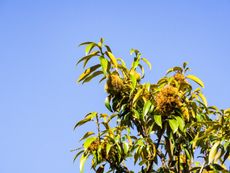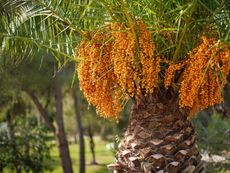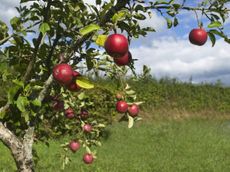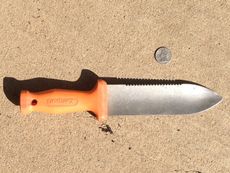
Liz Baessler
The only child of a horticulturist and an English teacher, Liz Baessler was destined to become a gardening editor. In 2007 she graduated cum laude from Brandeis University with a BA in English. In 2014 she earned an MA in English from l'Université de Genève in Geneva, Switzerland.
She began writing for Gardening Know How in 2015 and never left. Over the years she has been promoted through the ranks of the editorial staff, most recently to Senior Editor in 2020.
For years Liz lived in one apartment or another, doing all of her gardening in containers, community gardens, and holes in the sidewalk. She served for several years on the board of her community garden, where she also worked as a beekeeper. In 2017 she completed her Master Gardener certification at the University of Rhode Island, and attended every class offered by the Rhode Island Beekeepers Association.
Liz has since moved to a tiny patch of land she can call her own outside Boston, where she is systematically digging up the lawn and replacing it with vegetables and native pollinators.
Latest articles by Liz Baessler
-
Barley Basal Glume Blotch – How To Treat Glume Rot On Barley Plants
Basal glume blotch is a disease that can affect cereal grains, including barley, and can cause serious damage to the plant and even kill young seedlings. Click the following article to learn more about recognizing and treating basal glume blotch of barley crops.
By Liz Baessler
-

Leucadendron Information – How To Grow A Leucadendron Plant
Leucadendrons are stunningly colorful plants native to South Africa but capable of growing around the world. Want to learn more about Leucadendron care and how to grow a Leucadendron plant? This article will help with that.
By Liz Baessler
-

Growing Zone 8 Bulbs – When To Plant Bulbs In Zone 8
Bulbs are a great addition to any garden. Plant them in the fall and forget about them. In the spring, you'll feel as though you didn't even have to do any work. Learn more about what bulbs grow in zone 8 gardens so you can choose the best type for your area.
By Liz Baessler
-

Hops For Zone 8 Gardens – Can You Grow Hops In Zone 8
Growing a hops plant is an obvious next step for every home brewer - now that you make your own beer, why not grow your own ingredients? Click here to learn more about growing zone 8 hops in your garden and selecting hops varieties for zone 8 conditions.
By Liz Baessler
-

Zone 8 Berry Care – Can You Grow Berries In Zone 8
Berries are a fantastic asset to any garden. If you want a good crop of fruit but don't want to deal with a whole tree, berries are for you. But can you grow berries in zone 8? Click here to learn more about growing berries in zone 8 and how to select zone 8 berries.
By Liz Baessler
-

Caring For Chinquapins: Tips On Growing Golden Chinquapin
Golden chinquapin is a relative of chestnuts that grows in the Pacific Northwest of the United States. The tree is easily identifiable by its long, pointy leaves and spiky, yellow nuts. Learn more chinquapin information in this article.
By Liz Baessler
-

Cutting A Pindo Palm Back: When Do Pindo Palms Need To Be Pruned
Palm trees come in a wide variety of shapes, sizes, and species, and it's not always clear how much each tree needs to be pruned, if at all. Click this article to learn more about how and when to prune a pindo palm tree.
By Liz Baessler
-

Swiss Chard Seed Care: How To Plant Swiss Chard Seeds
Chard can be started early in the spring and counted on not to bolt (usually) in the heat of summer. You can learn more about Swiss chard seed care and when to sow Swiss chard seeds in the article that follows. Click here for more information.
By Liz Baessler
-

Low Chill Hour Apples – Tips On Growing Zone 8 Apple Trees
Apples are by far the most popular fruit in America and beyond. Zone 8 is right on the edge of places where apples can conceivably grow. Learn more about growing apples in hot climates and how to select apples for zone 8 in this article.
By Liz Baessler
-

Wedelia Plant Care – Learn How To Grow Wedelia Groundcover Plants
Wedelia is a plant that has some very mixed reviews, and rightly so. While praised by some for its small, bright yellow flowers and ability to prevent erosion, it is also reviled by others for its aggressive spreading tendencies. Learn more about the plant here.
By Liz Baessler
-
Help, My Orchid Is Rotting: Tips On Treating Crown Rot In Orchids
Orchids are beautiful, delicate, and very hard to grow in the eyes of some. It's no wonder that orchid problems can send a gardener into a panic. This article will help with information about crown rot in orchids and orchid crown rot treatment.
By Liz Baessler
-

What Are Rakes Used For: Different Kinds Of Rakes For Gardening
By Liz Baessler
-

What Is A Transplant Spade: Using Transplant Spades In The Garden
Almost every gardener has a shovel, and probably a trowel too. And while you can get a long way with a few simple tools, it's sometimes nice to have the perfect utensil for the job. One such item is the tree transplant spade. Learn more in this article.
By Liz Baessler
-

Harvesting Juneberries: How And When To Pick Juneberries
Juneberries, also known as serviceberries, produce an abundance of edible berries. But what do you do with all that fruit? Click here to learn more about how and when to harvest juneberries, and how to use juneberries in the kitchen.
By Liz Baessler
-

Japanese Digging Knife – Using A Hori Hori Knife For Gardening
By Liz Baessler
-

Canary Vine Seed Propagation – Germinating And Growing Canary Vine Seeds
The canary vine is a beautiful annual that produces lots of bright yellow flowers and is often grown for its vibrant color. It is virtually always grown from seed. If you would like to learn more about canary vine seed propagation, this article will help.
By Liz Baessler
-

Zone 7 Junipers: Growing Juniper Bushes In Zone 7 Gardens
Junipers are evergreen plants that come in a wide variety of shapes and sizes. But which type of juniper shrubs are best suited to growing in zone 7? Click the article that follows to learn more about selecting junipers for zone 7 landscapes.
By Liz Baessler
-

Growing Dogwoods In Pots – How To Grow Dogwoods In A Container
Dogwoods are beautiful trees with striking spring flowers and are commonly seen in the landscape. But have you ever wondered, "Can I grow dogwood in a container?". Click here to learn more about caring for potted dogwood trees.
By Liz Baessler
